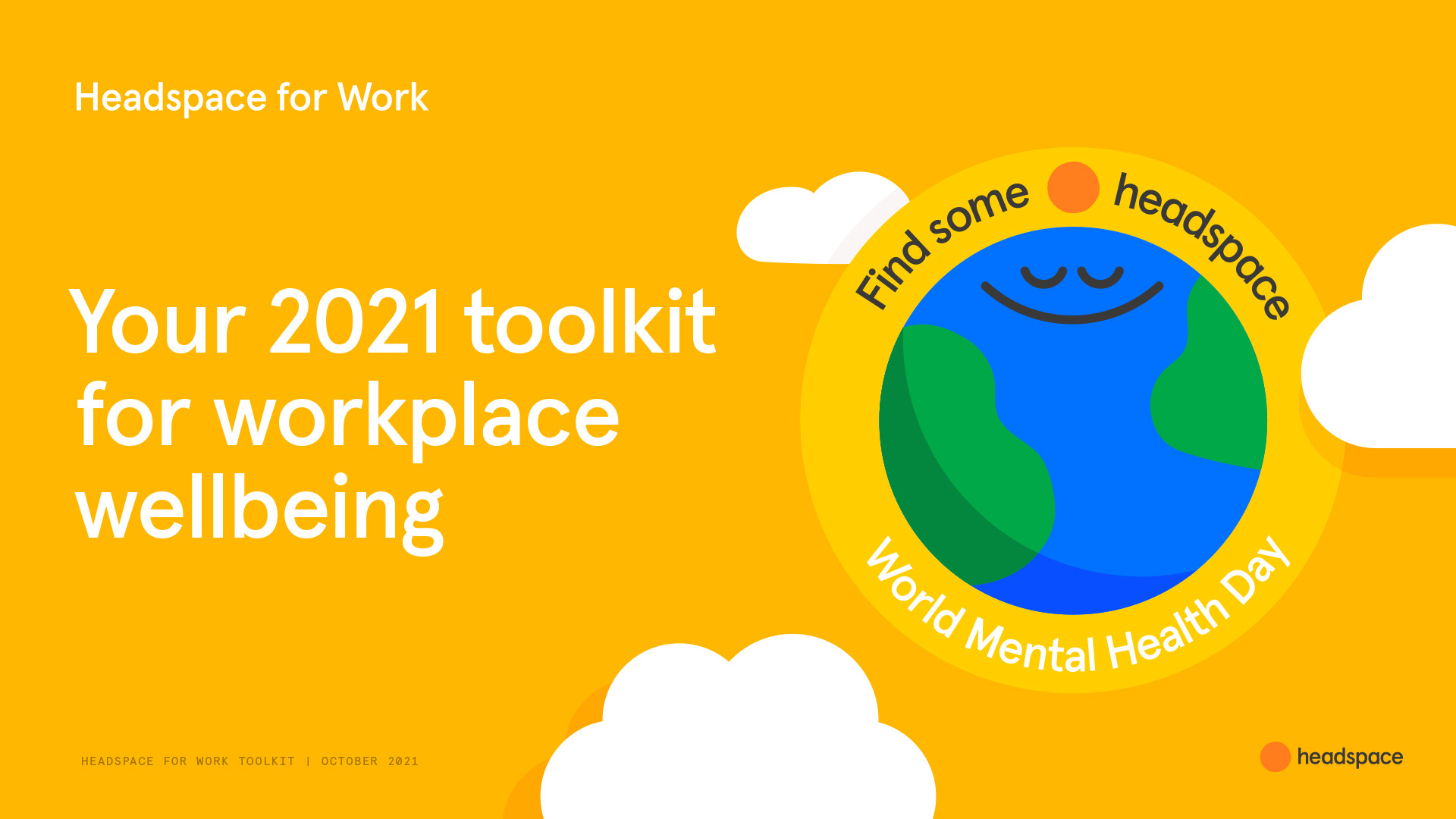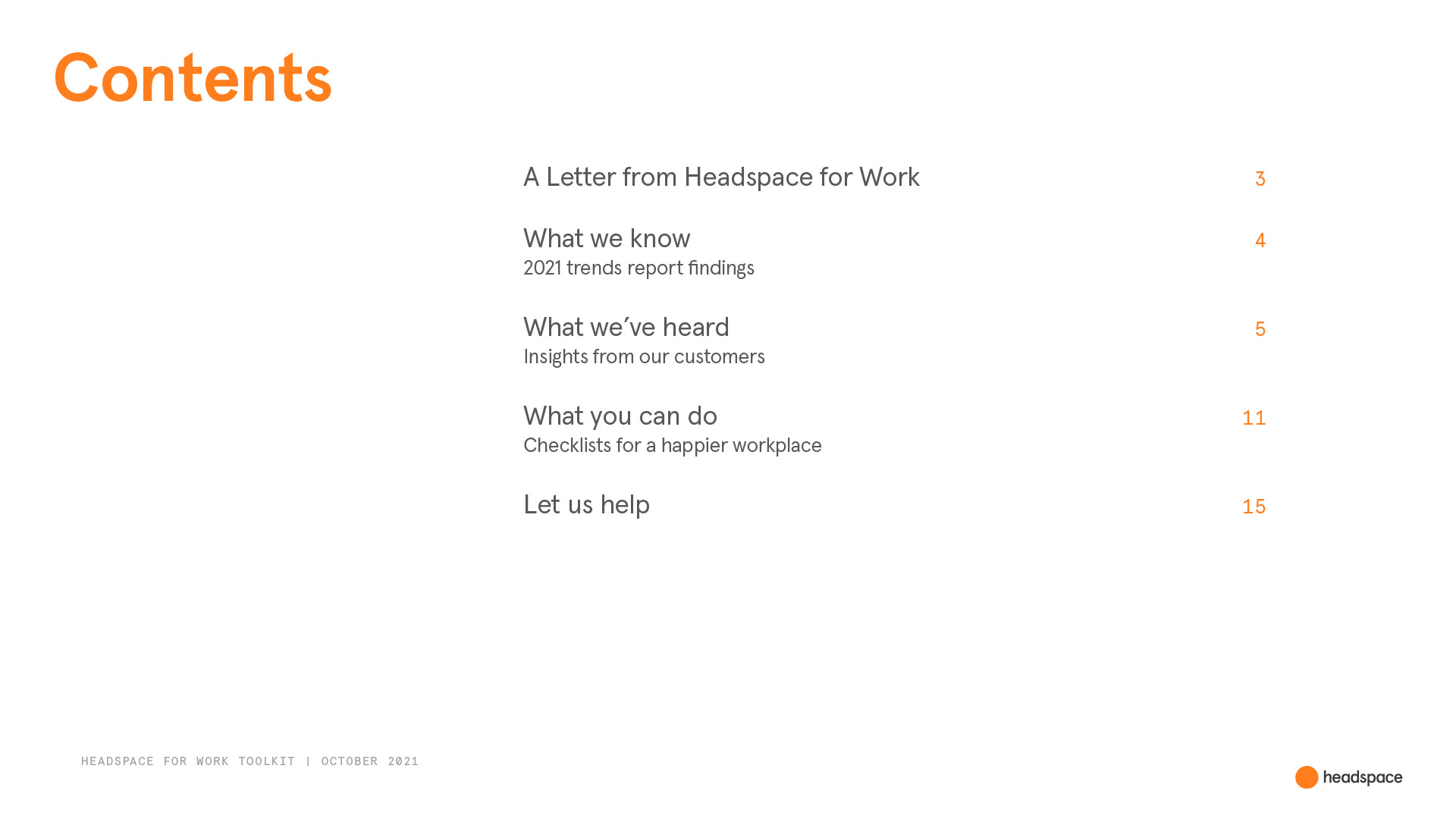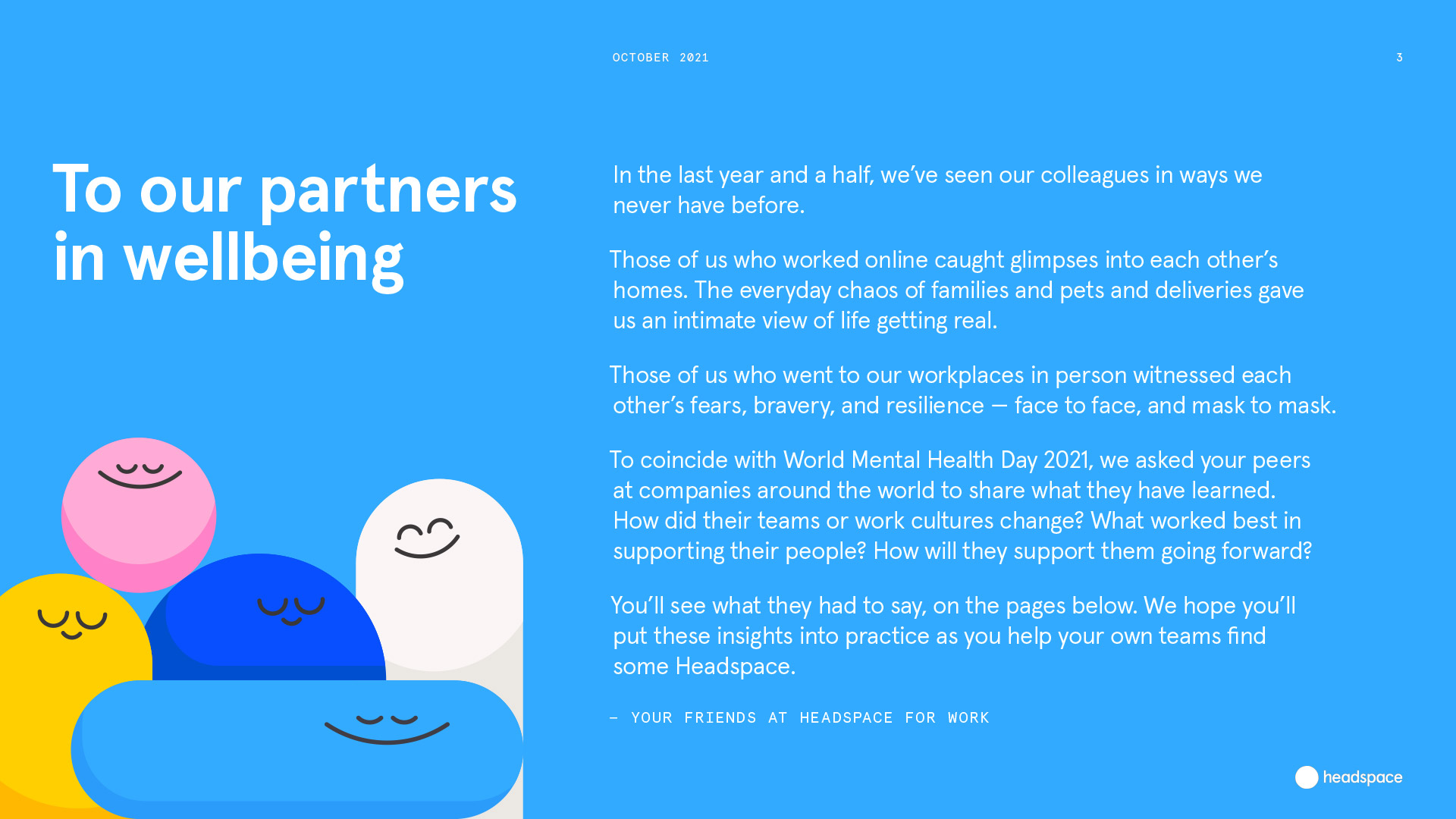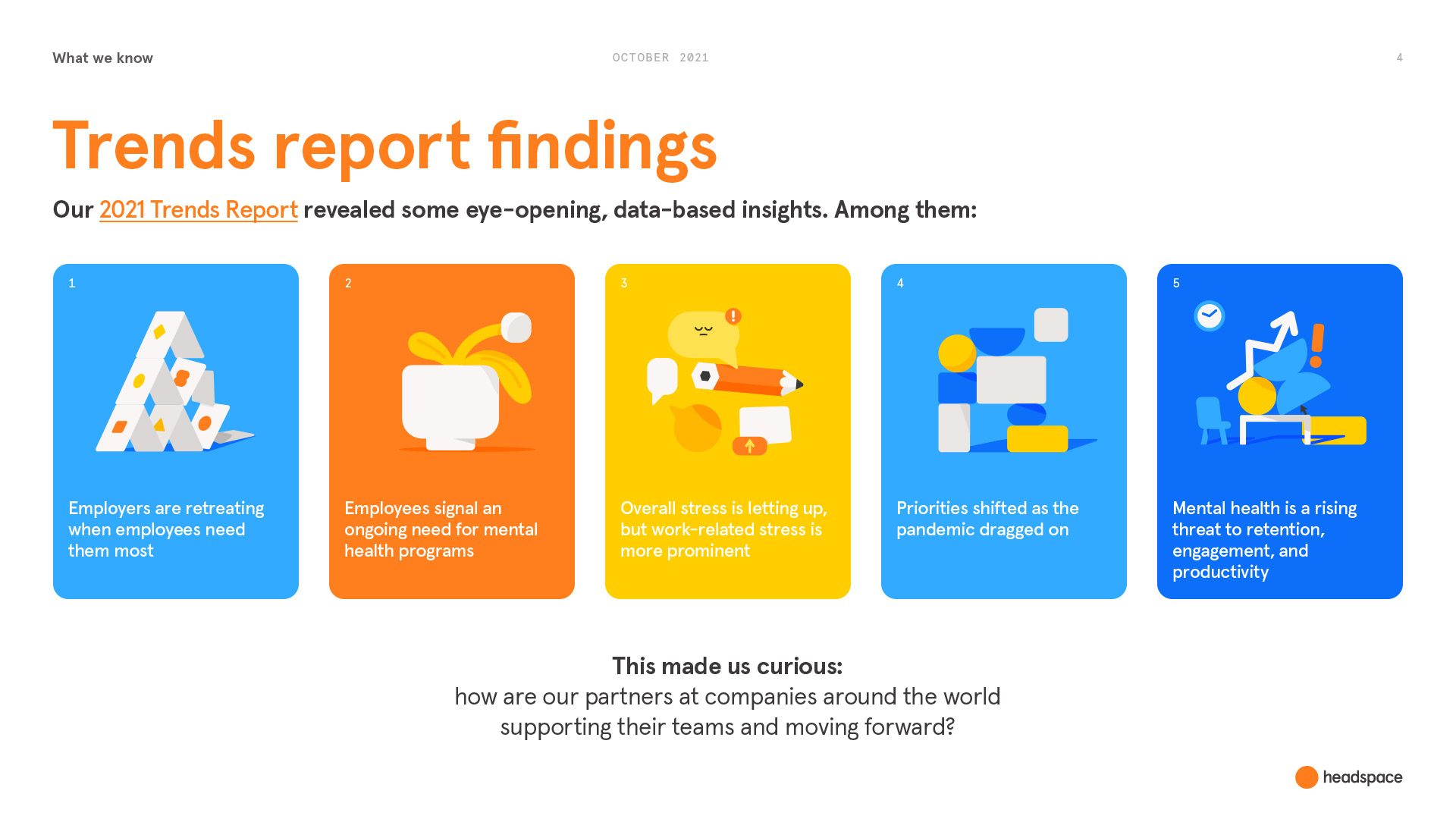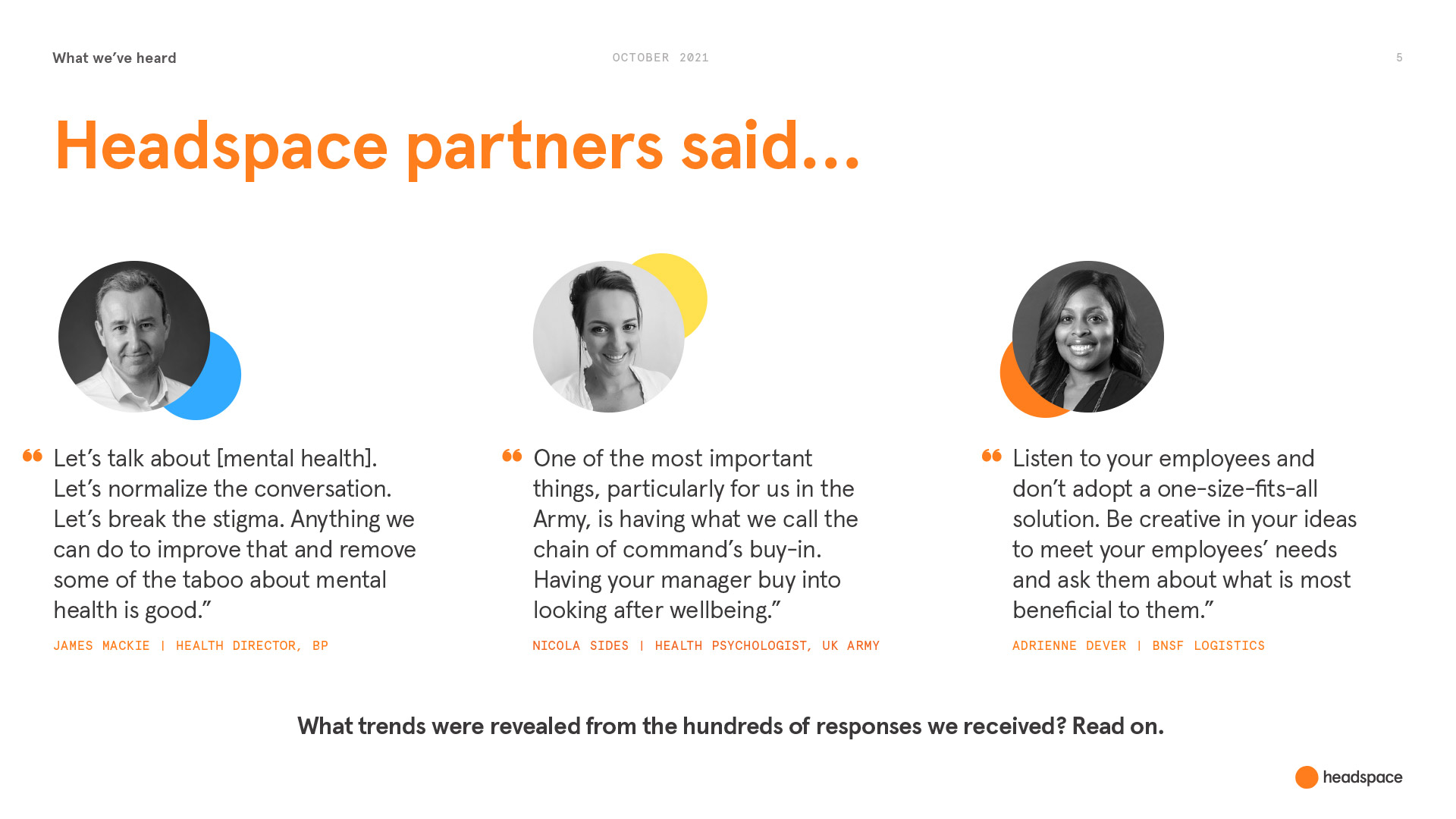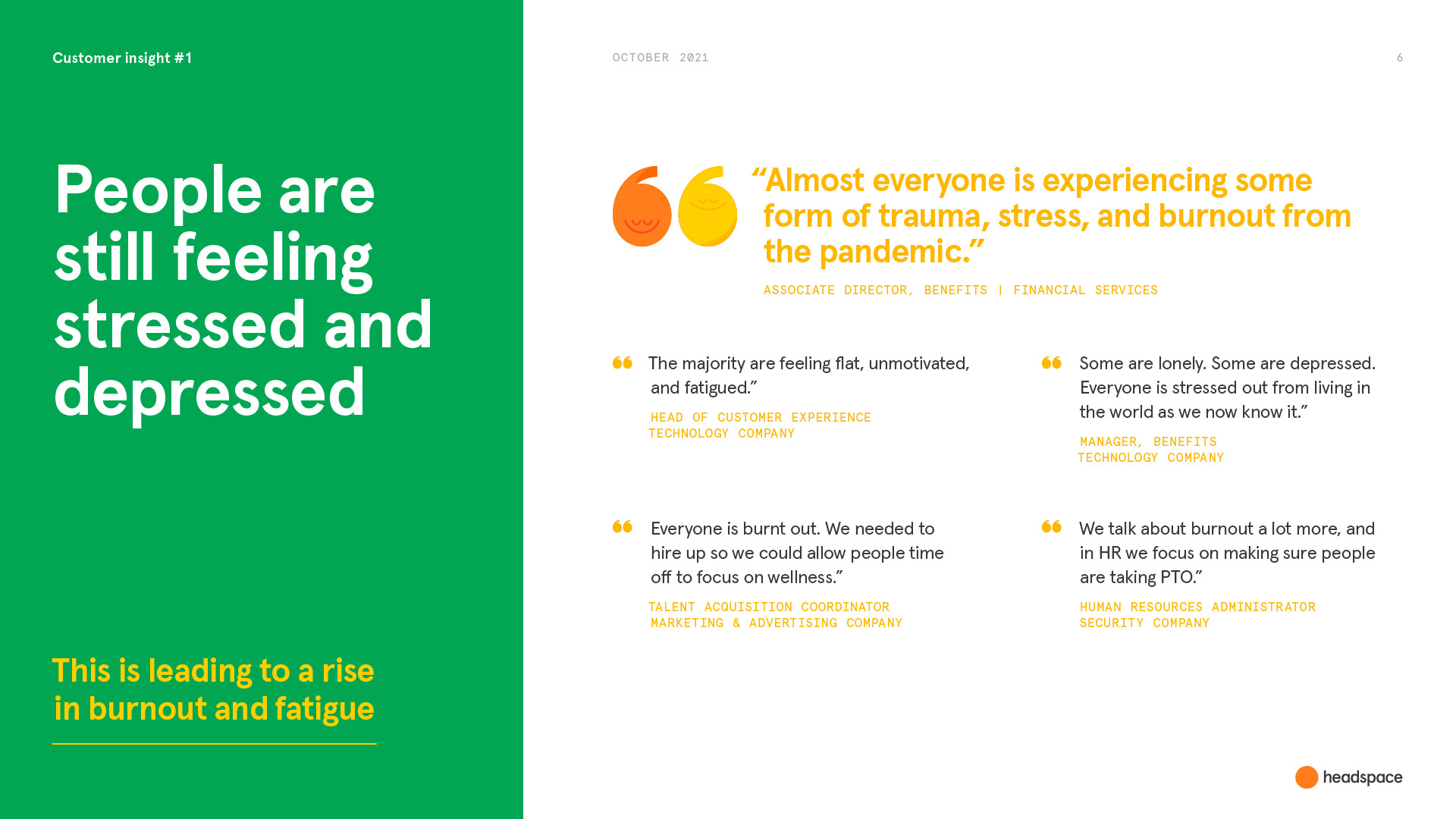From Consumer to Enterprise-Ready
Headspace was one of the first to market in a now crowded digital mental health space. To stay relevant and maintain its leadership position it needed to grow. And with the rising awareness among executives for the need to offer mental health services as a core employment benefit – mental health issues cost employers billions in turnover, productivity, healthcare, etc. – Headspace for Work was identified as one such key area for growth.
However, it lacked the marketing organization, strategy, and rigor to take advantage of its strategic opportunity, which is what we tackled first. Read about our work and success here in “Driving Revenue by Becoming a Better Marketing Partner.”
Next, with the sales pipeline stabilized and running smoothly, we turned our attention to raising brand awareness with a new and priority target audience: executives rethinking their organization’s strategies as they drive the vision and own the budgets to realize that vision. However, the Headspace for Work brand was too consumer in tone, look and feel, and content. We needed to transform it into an enterprise-ready brand – a thought leader – so that large companies and their leaders would take it seriously.
Our plan: Evolve the brand strategy to align with an executive mindset and develop a content strategy to reach and engage our target audience.
Find the Right Creative and Strategic Partners
To help with the needed brand and content strategy work, we sourced and integrated two agency partners into the enterprise marketing team: a local Los Angeles creative agency to help us think through and refine the Headspace for Work brand and develop the B2B content strategy, and an international agency to help us culturally translate both to our global audiences.
Clarify and Elevate the Brand
We first explored how to define the core value proposition of Headspace which is “mindfulness and meditation” for its enterprise offering. We decided to focus on skill building: meditation and mindfulness tools that can help employees build skills of resilience, selfcare, focus, etc. The practice of mindfulness is often perceived as vague or a privilege of white collar professionals. We wanted to position it as practical and attainable – something that employers could confidently invest in and employees would find applicable and beneficial in helping them perform their best at work and home.
As a result, we positioned Headspace for Work to address more serious topics such as the mental health crisis among healthcare workers. This required the development of a new visual approach with a graphic language that was true to the Headspace brand (heartfelt) but showed it was a serious player.
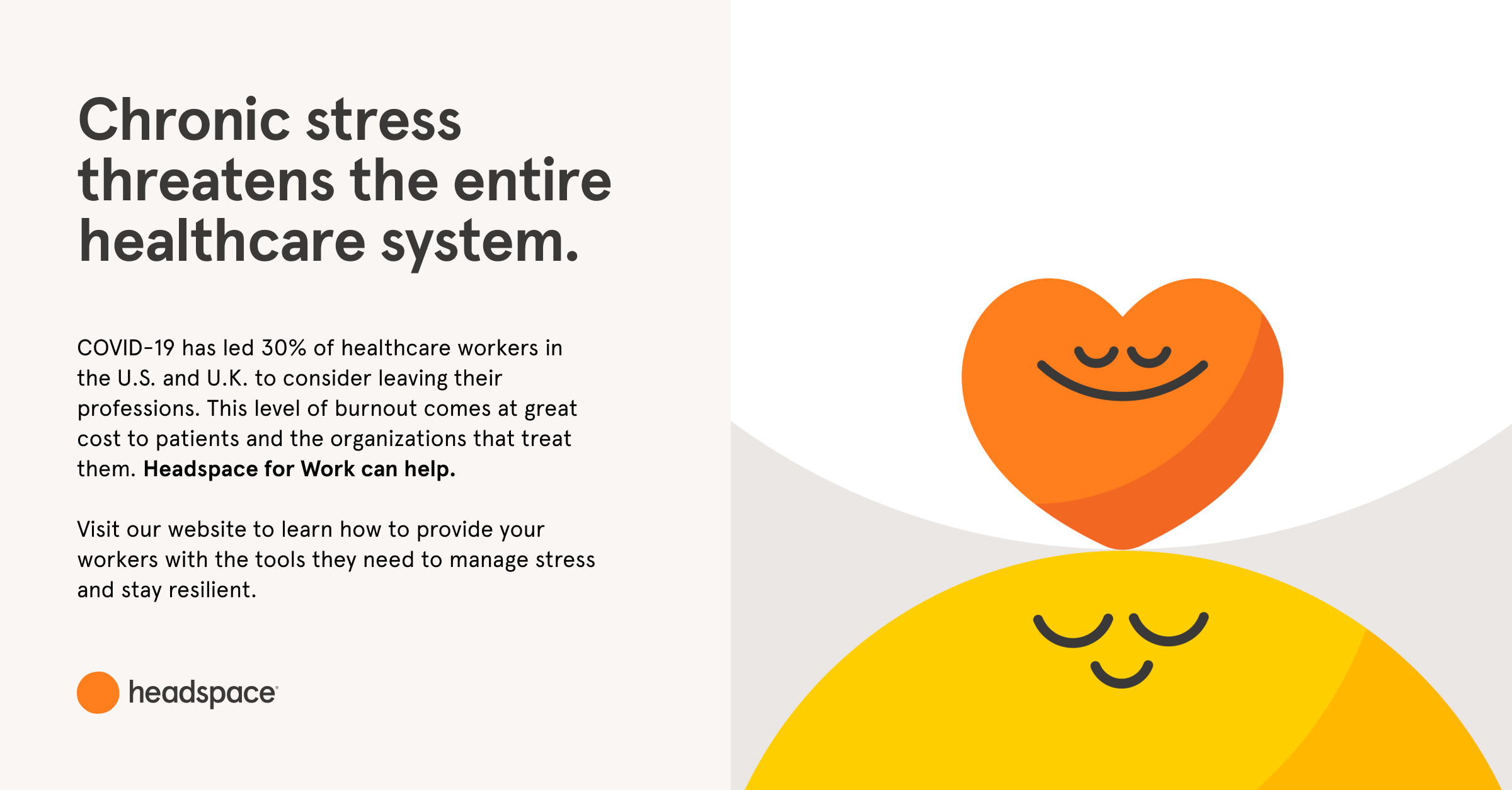
Before:
Heartfelt and consumer-centric, which didn’t match the seriousness of the topic
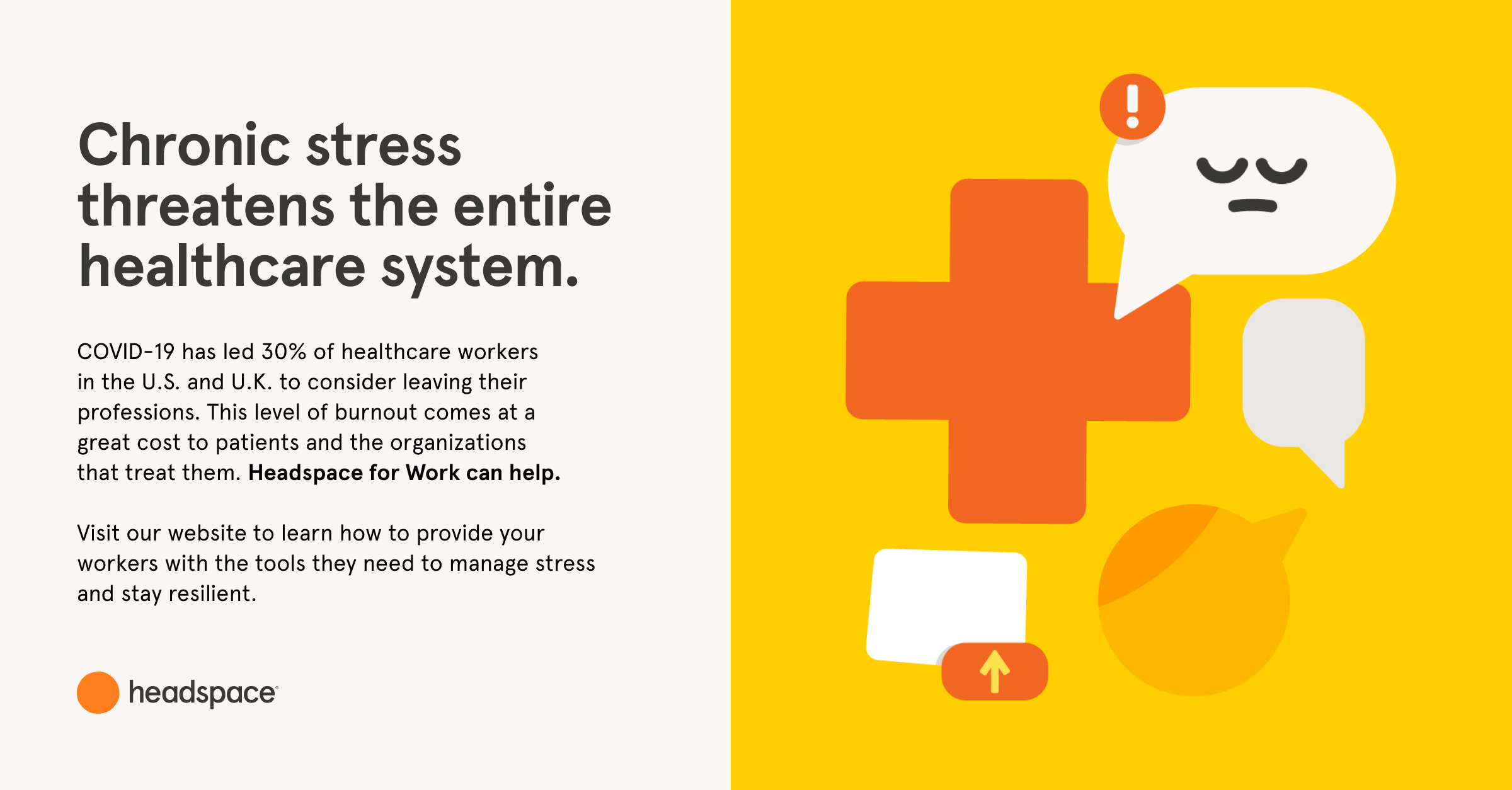
After:
More visually appropriate to the topic and enterprise audience, yet keeps the soul of the brand
Invest in Content Strategy to Tell a Story
Coming out of the brand strategy work, we turned our focus to developing a content strategy as content is key to proving what Headspace for Work can do for teams and their employers. Headspace has conducted many scientific studies and is proven to help increase focus and resilience and improve sleep – all very powerful mental health outcomes. This was the story we wanted to tell.
After researching mindfulness and mental health topics that intersected with the interests of employers and employees, we selected a few topics that Headspace for Work could own and others for it to participate in as not to be absent from important conversations.
A central piece of the content strategy focused on engaging HR Admins to help them drive initiatives inside their companies and rally employees to adopt the Headspace for Work benefit (i.e., become active users). This was key for renewal rates, taking the pressure off of growing Headspace for Work from primarily new customer acquisitions. It also provided customer success stories for case studies that we used to both enhance the enterprise brand and influence executives considering mental health solutions for their employees.
Take it Global
Headspace is a global brand with customers outside of the U.S. With the help of our international agency partner with offices in all of Headspace for Work’s priority countries, we began to adapt the marketing work produced in English at the U.S. headquarters for different global audiences. We also developed country-specific content to address unique marketplace needs, audience perceptions – for example, Germans tend to be more skeptical of addressing mental health in the workplace, the British more open – and sales teams’ requirements in local languages.
“In a manner of months, you’ve moved our marketing team forward three years and elevated the sophistication of our marketing plans and content.”
-Gigi Anderson, Head of Customer Engagement, Headspace
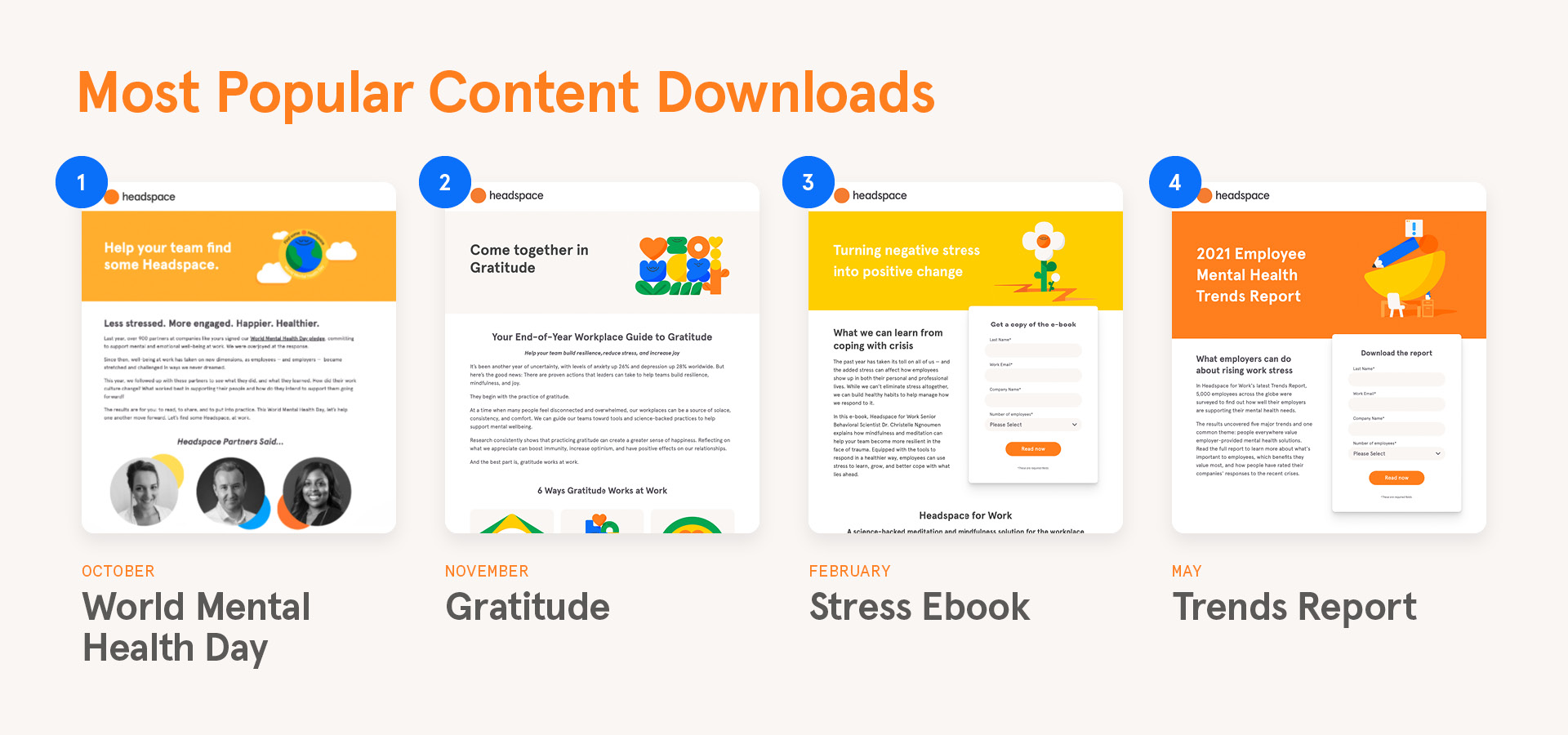
Content that Works
The content and campaigns that were developed out of the enterprise brand evolution and content strategy are some of Headspace for Work’s best performing to date in reaching top-level executives and HR admins from medium and large companies. Additionally, Customer Success Managers (CSMs), who work with HR Admins, report that the HR Admin kits, which have been distributed globally, are outstanding: Customers are using them with great success, driving employee engagement and feeling more effective in their jobs.

